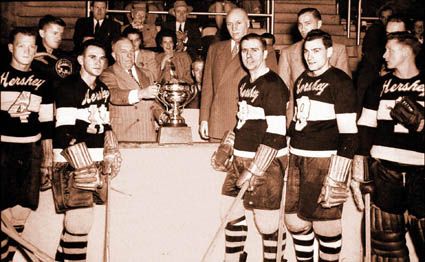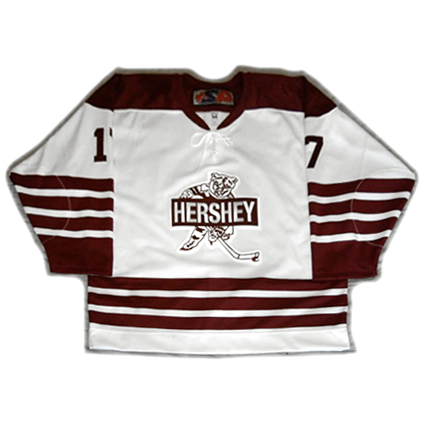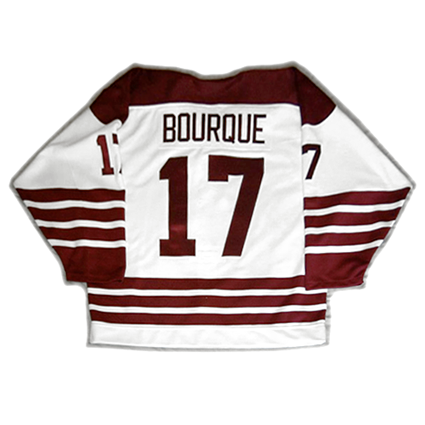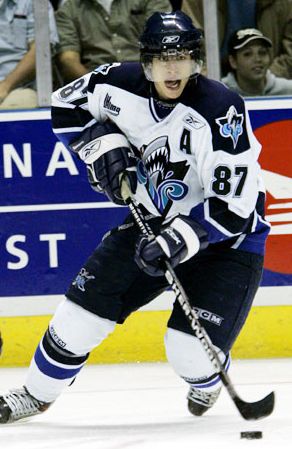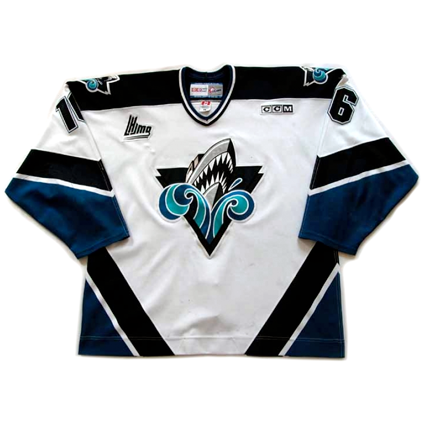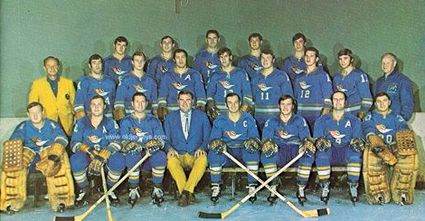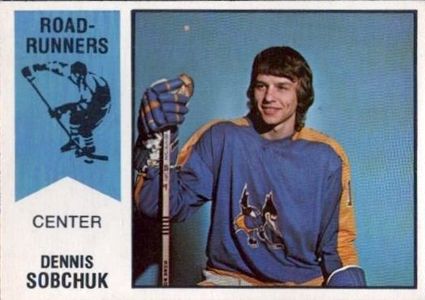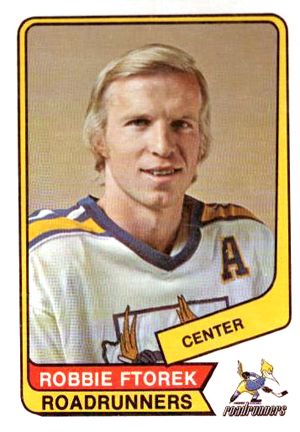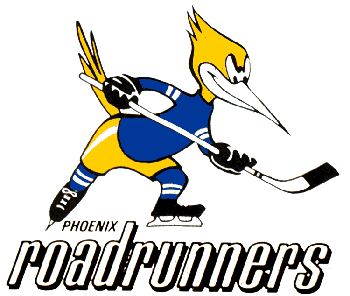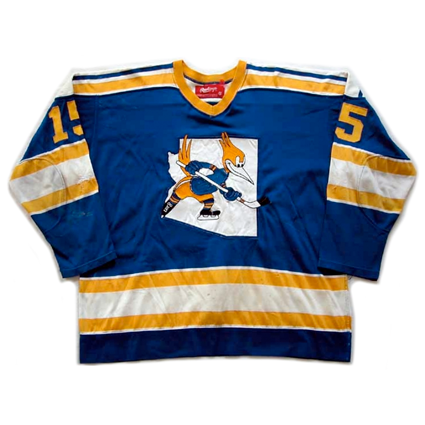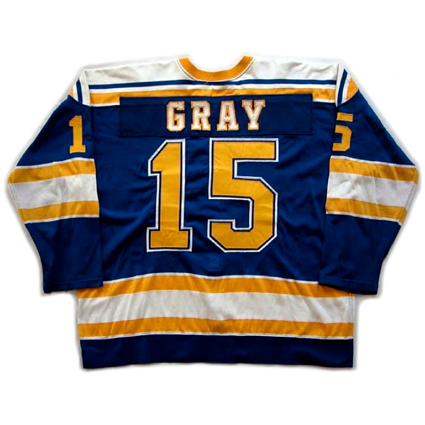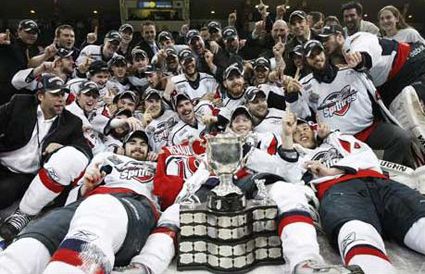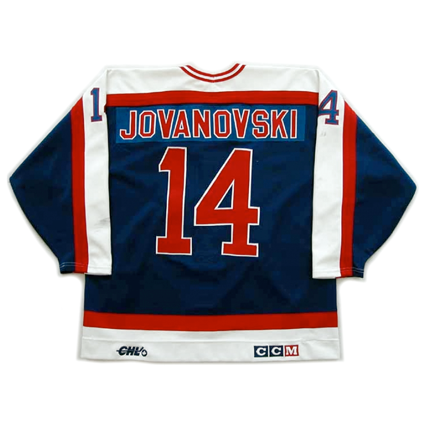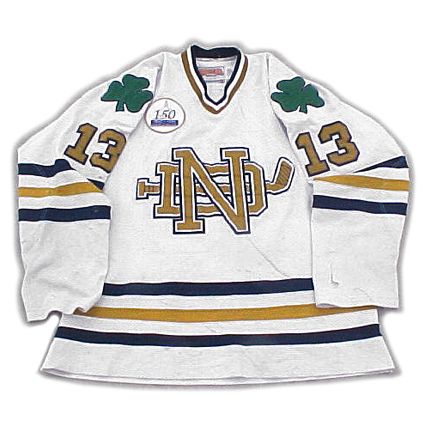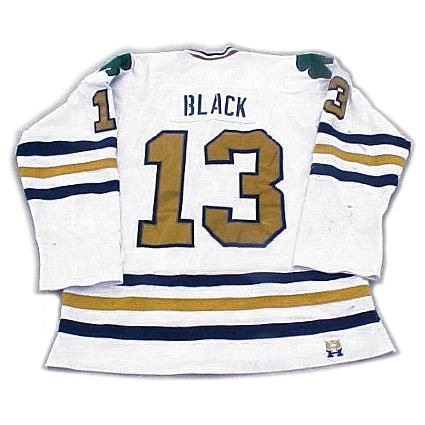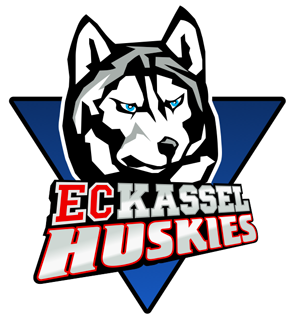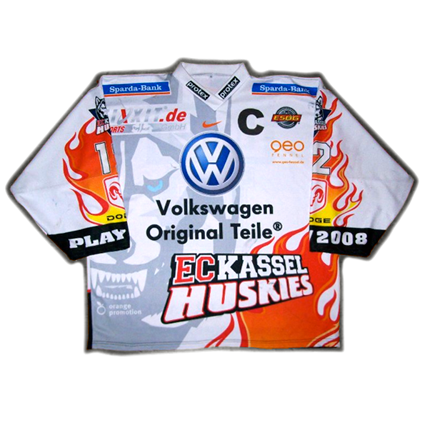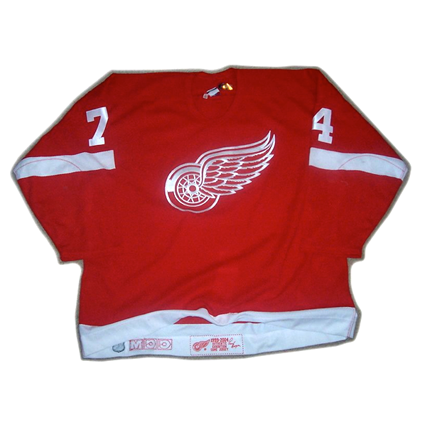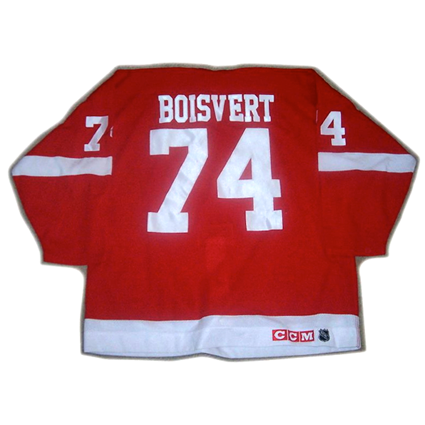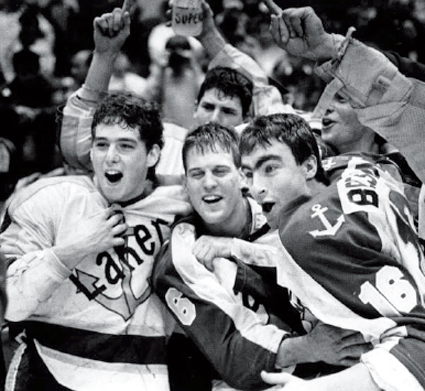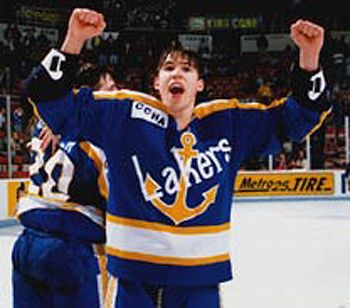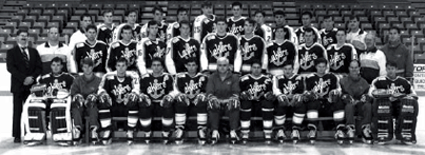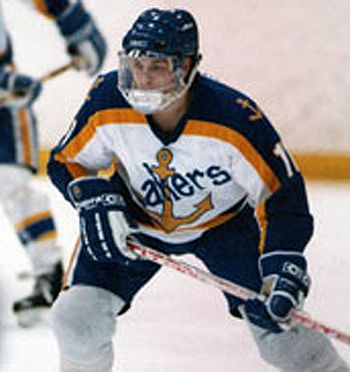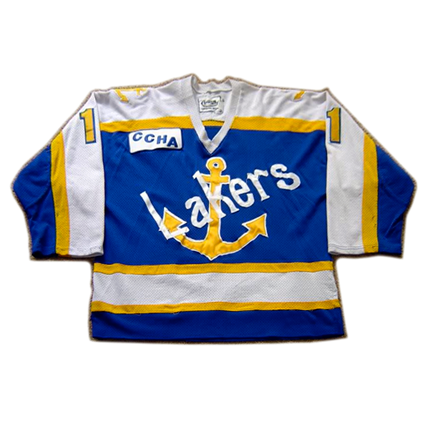Saturday, July 17, 2010
2007-08 Hershey Bears Chris Bourque Jersey
July by the Numbers travels back in time for jersey #17.
The Hershey Bears, founded in 1932, are the oldest club in the American Hockey League, having joined the league back in 1938. They have been members of the league 18 years longer than the Rochester Americans and have 54 more years in the league than the Providence Bruins, truly making them the senior member of the AHL.
Founded by the founder of the Hershey Chocolate Company, Milton S. Hershey, the club was originally called the Hershey B'ars. Responding to criticism that the name was too commercial, the name evolved to the Bears by 1936. They moved to the Hershey Sports Arena in 1936, later renamed Hersheypark Arena, which remained their home until 2002.
They joined the International-American Hockey League in 1938, which was shortened to the American Hockey League in 1940.
The Bears won their first Calder Cup championship in 1947 after defeating Cleveland in four games by a combined score of 24-3 with two shutouts in Round 1. They then advanced to the finals against Pittsburgh, who had ended the Bears season in each of their three prior meetings. The Bears turned the tables this time. While it took the full seven games, three of the Bears four victories were by shutout.
The 1947 Calder Cup presentation to the Hershey Bears
The Bears would not win another until 1958, aided by the demise of the Pittsburgh Hornets in 1956. With the roster of the Hornets, who had won two recent championships now up for grabs, the Bears signed seven players from Pittsburgh to set them on course for back-to-back titles in 1958 and 1959. One of those players, Willie Marshall, would lead the Bears in scoring for seven consecutive seasons from 1956 to 1963.
Another one of the Hornets players brought to Hershey was Frank Mathers, a 31 year old, five time AHL First Team All-Star defenseman who would go on to become an integral part of the Bears organization for 35 years as a player/coach all the way to team president!
In 1958 the Bears also acquired Mike Nykoluk, a 23 year old with some NHL experience who would play for Hershey for the next 14 seasons and retire as the AHL's fourth leading scorer of all time. His #8 would become the first number retired by the Bears.
It would take the Bears until 1969 to capture their next Calder Cup with a 4 games to 1 victory over the Quebec Aces.
They reached the top of the heap again in 1974 with a balanced squad that did not place a single scorer in the league's top ten, but roared through the playoffs with a 12-2 record to take the Calder Cup home to Pennsylvania at the same time the Philadelphia Flyers were doing the same with the Stanley Cup, giving the state the top two trophies in North American professional hockey for the first time, a feat not repeated until 2009, this time by the Bears and Pittsburgh Penguins.
The Bears next championship arrived in 1980, although the Flyers were unable to hold up their end of "the double" when they lost in the Stanley Cup Finals to the New York Islanders.
Hershey celebrated their 50th season in style, winning 50 regular season games and romping through the playoffs undefeated to win the seventh title in team history, which was celebrated with a victory parade attended by 10,000 fans back at home two days later.
Mathers #3 was retired on March 9, 1991 with representatives from each of his Calder Cup winning teams present at the arena.
Tim Tookey, the second leading scorer in team history and fifth in the AHL, and Arnie Kullman both had their #9 retired on December 9, 1995.
While the 1980 club swept the playoffs in their entirety, the 1996-97 Bears had a much longer, tougher route. A first round 3-1 win over Kentucky opened their playoffs prior to a long, rugged seven game series over their rivals from Philadelphia. There was no time or chance to rest, as Springfield also stretched the Bears to a full seven games in the conference finals. The Bears made relatively easy work over Hamilton in the championship, prevailing 4 games to 1 to secure their eighth Calder Cup for Hershey and their final one in their original home.
After over 60 years at Hersheypark Arena, the Bears moved into the brand new Giant Center in 2002. Five seasons later they began a new run of success. Following a first place regular season finish with a then team record 114 points, the Bears dominated the 2007 playoffs with 16 wins and just three losses, never losing more than one game in any round, to hang a brand new banner in their new arena for the first time, the ninth in club history.
The Bears established new league record in 2008-09 by winning their 10th championship after knocking out Philadelphia in four, Wilkes-Barre/Scranton in seven and Providence in five to earn the right to face the Manitoba Moose, who they took six games to defeat before raising the cup.
For the first time in over 50 years, the Bears repeated as Calder Cup champions in 2009-10. They blitzed the league during the regular season with a dominant 60-17-0-3 record to set a new team record with 123 points, easily the best mark in the AHL. Bridgeport and Albany fell in one game over the minimum in the division playoffs before Manchester put up a better fight before falling in six. Hershey then faced off against Texas, who also lasted six games before falling to the Bears, a team with 77 more seasons in the league.
Today's featured jersey is a 2007-08 Hershey Bears Chris Bourque jersey. It should be mentioned that this special throwback jersey style is not "brown" and white, but chocolate and white.
The jersey is in keeping with the style the team wore back in their original home, Hersheypark Arena prior to adopting a new logo and modern looking jerseys after moving into the Giant Center. When a team as been around as long as the Bears, they have many classic styles to choose from and in this case made an attractive choice.
Our video section today features the Hershey Bears most recent championship victory celebration in 2010, the 11th championship in team history.
Next up is an awesome video celebrating the Bears 70th anniversary with lots of great old photos and excellent game footage.
Labels:
AHL,
Hershey Bears
Friday, July 16, 2010
2003-04 Rimouski Océanic Erick Tremblay Jersey
July by the Numbers returns to Quebec for jersey #16.
Rimouski Océanic was founded in 1969 as the Sherbrooke Castors until 1982 when they moved to Saint-Jean from 1982 until 1989. They then changed their name to the Saint-Jean Lynx from 1989 until 1995 when they relocated once more and took the name Rimouski Océanic.
During the 1999-00 season, their fifth in Rimouski, the Océanic finished first overall during the regular season with 102 points, thanks in part to Brad Richards league leading 186 points while leading the league in both goals and assists. During the playoffs they proceeded to win the QMJHL championship to advance to the Memorial Cup playoffs.
There, they defeated Kootenay 3-1, Barrie 7-2 and hosts Halifax 5-3 to complete the round robin portion undefeated to advance directly to the final. Barrie won the right to challenge Rimouski and Océanic captured the championship with an easy 6-2 win.
Following their championship, Rimouski fell on hard times for the next three seasons, including a 11-58-3 record in 2002-03. Help arrived the following season in the from of one Sidney Crosby, who proceeded to lead not only the team, but the league in scoring for the next two seasons.
During the second of those seasons, Rimouski set a record with 28 consecutive games without a loss. Océanic then won the QMJHL playoffs when they defeated Lewiston, Chicoutimi and Halifax while winning 12 games and losing but one. Their league championship earned them a slot in the Memorial Cup playoffs. They lost their first game to London, but defeated both the defending champions Kelowna and then Ottawa. Ottawa was again dispatched in the semifinals to earn Rimouski a place in the finals against London, who prevailed to deny Océanic a second championship.
Aside from future Conn Smythe Trophy winner Richards and NHL superstar Crosby, other recognizable names who's route to the NHL has passed through Rimouski include Eric Belanger, Ryane Clowe and Vincent Lecavalier.
The presence of Crosby on the team has raised their profile among fans in the United States and Crosby Rimouski jerseys have become a hot commodity for those looking to break out of the mold of a Pittsburgh Penguins jersey.
Today's featured jersey is a 2003-04 Rimouski Océanic Erick Tremblay jersey. At first glance their logo appears to be a shark leaping from the waves, but it is in fact an ocean liner sporting an enormous set of jaws.
Our video section today is a profile of Sidney Crosby during his days with Rimouski Oceanic.
Labels:
QMJHL,
Rimouski Océanic
Thursday, July 15, 2010
1975-76 Phoenix Roadrunners John Gray Jersey
July by the Numbers makes a visit to the American desert southwest for jersey #15.
The Phoenix Roadrunners were originally a team in the Western Hockey League from 1967 to 1974 after relocating from Vancouver, BC where they played for three seasons. The WHL folded after the 1973-74 season and the franchise then joined the WHA for the 1974-75 season.
They were led in scoring by Dennis Sobchuk, who was on loan from the Cincinnati Stingers franchise who were awaiting the construction of their arena before they could begin play, who had 77 points with 32 goals and 45 points.
Michel Cormier came second with 74 points and led the club with 36 goals, one more than John Gray and Murray Keogan, a holdover from the club's days in the WHL. Joining the group with 30 goals or more was Robbie Ftorek with 31.
The Roadrunners posted a winning record with 39 wins against 31 losses and 8 ties to qualify for the playoffs in their maiden WHA season, where they were bounced out by the Quebec Nordiques 4 games to 1.
Ftorek led the team in scoring in 1975-76 with 113 points from 41 goals and 72 assists, good for fifth overall in the league. Del Hall had a career season with 47 goals and 91 points for second on the club while Gray was the only other 30 goal scorer with 35.
In the standings, Phoenix earned 84 points, which again earned them a playoff spot, but they were defeated by the San Diego Mariners by a single goal in their decisive Game 5 of their Round 1 series.
In 1976-77, Ftorek led the club in scoring once more, this time with a team leading 46 goals, 71 assists and 117 points which placed him fourth in league scoring and earned him the league MVP award.
Despite Ftorek's outstanding season, the Roadrunners attendance dropped, causing the owners to sell some of the players for a needed influx of cash. An unpopular change in coaches combined with the team finishing dead last in the standings, thanks in part to the selling off of some key players, caused the owners to try to look for a buyer for their franchise. When none was forthcoming, they chose to cut their losses and fold the franchise, ending their three year run in the WHA.
Today's featured jersey is a 1975-76 Phoenix Roadrunners John Gray jersey. The Roadrunners wore mesh jerseys for their first season and then changed to dureen jerseys for their second season which feature a beautifully chain stitched main roadrunner logo with the addition of the state of Arizona as a background as well as an attractive striping pattern lacking on their first seasons jerseys.
The only complaint we have is the heavy-handed application of the nameplate on the back, which encroaches into the shoulder yoke to the point of covering up half the yellow stripe, but it is still easily one of the most striking jerseys in WHA history.
Labels:
Phoenix Roadrunners,
WHA
Wednesday, July 14, 2010
1993-94 Windsor Spitfires Ed Jovanovski Jersey
July by the Numbers heads south of Detroit to the only Canadian city south of an American city for jersey #14.
The Windsor Spitfires of the Ontario Hockey League of Canadian junior hockey were formed in 1971 and gained entry into the OMJHL, later shortened to the OHL, as an expansion franchise in time for the 1975-76 season.
They won their first OHL playoff championship in 1988 after closing out the season with a remarkable 35 wins in their final 36 games, including becoming the first team to march through the OHL playoffs undefeated. Based on their OHL title, they were entered in the Memorial Cup Playoffs, where they made it to the championship final.
In February of 2008, Spitfires captain Mickey Renaud died of an undetected heart condition, shocking the Spitfires to the point that team General Manager Warren Rychel called it "the biggest tragedy in Spitfire history". Renaud's #18 was retired by the franchise and a road leading to their new stadium was named in his honor.
The Spitfires rebounded from their loss in 2008-09 with the best season in franchise history, going 57-10-1, which included going undefeated during their final games in their old arena before moving to their new home midway through the season. They battled their way through the OHL playoffs, including a second round, five game series in which every game went into overtime, before taking their second OHL playoff championship and a berth in the Memorial Cup playoffs.
There, the Spitfires lost their first two games by a goal, including the first one in overtime to Drummondville and the second to Rimouski, putting themselves in a nearly impossibly deep hole, but they won an elimination game 2-1 over WHL champions Kelowna to earn a berth in a tie-breaker game, comparable to a quarterfinal matchup. They defeated hosts Rimouski to advance to the semifinal in a rematch with QMJHL champions Drummondville, who they eliminated 3-2 in overtime to earn a berth in the Memorial Cup Final against Kelowna.
Windsor had a dream start to the game, as they scored on their first three shots on goal and went on to win 4-1 for their first ever Memorial Cup championship, the first team to ever come back from two losses and the first team to win a tie breaker game and take the title - all with Renaud's jersey on their bench.
Windsor celebrates with the Memorial Cup and Mickey Renaud's jersey
They backed up their championship season with another 50 win season, this time going 50-12-1-5. They won their two OHL playoff rounds, only to fall behind the Kitchener Rangers 3 games to none before becoming only the third team in OHL history to come back and win four straight to capture the series. The Spitfires then swept the Barrie Colts in four straight to win the OHL championship for the second season in a row, and again qualify for the Memorial Cup.
They made life easier for themselves this time around with three straight wins in the round robin phase by scores of 9-3, 6-2 and 4-3 to advance directly to the championship final, where they met the hosts, the Brandon Wheat Kings, who they again routed, this time 9-1 to become back to back champions and finish their playoff season with a 20-3 record and 12 straight victories.
Notable players in Spitfires history include Adam Graves, whose #9 is one of four numbers retired by the team, Ed Jovanovski, Jason Spezza and Cory Stillman as well as recent #1 overall selection in the NHL Draft Taylor Hall.
Today's featured jersey is a 1993-94 Windsor Spitfires Ed Jovanovski jersey. This jersey, from the year Jovanovski was drafted first overall by the Florida Panthers, features the logo used by the Spitfires from 1989 to 2008. ovanovski was the first Windsor Spitfire ever taken first overall, and the only one until Taylor Hall in 2010.
Today's video section begins with the drafting of Ed Jovanovski first overall by the Florida Panthers in 1994, which includes footage of him wearing today's featured Spitfires jersey.
Next, a video documenting the Spitfires remarkable comeback to win the 2009 Memorial Cup after losing their first two games.
Finally, a tribute to Mickey Renaud, the late captain of the Spitfires.
Labels:
Jovanovski Ed,
OHL,
Renaud,
Windsor Spitfires
Tuesday, July 13, 2010
1991-92 Notre Dame Fighting Irish Sterling Black Jersey
July by the Numbers makes a trip to northern Indiana for jersey #13.
College hockey at the University of Notre Dame dates as far back as 1912 and was active during the 1920's as well, but the school's modern program did not begin until 1968 after a 42 year absence.
The Fighting Irish played three seasons as an independent school prior to joining the Western Collegiate Hockey Association in 1971. Their best seasons in the WCHA were 1972-73 when they finished second with a 19-9-0 record and 1976-77, when they again came in second with a 19-10-3 mark.
As part of a major shift in college hockey conference alignment, Notre Dame, along with Michigan, Michigan State and Michigan Tech, left the WCHA and joined the Central Collegiate Hockey Association for the 1981-82 season. After finishing fourth in their first season in the CCHA, they dropped to eighth in 1982-83 before they dropped out of the CCHA when the program was downgraded to a club level sport in 1983-84.
Notre Dame elevated the hockey program back to Division I status for 1984-85, but this time as an independent program for eight seasons, which included their remarkable 27-4-2 record in 1987-88.
The Fighting Irish once again rejoined the CCHA in time for the 1992-93 season, but found the going tough in the competitive conference, as it would be seven seasons before Notre Dame posted a winning record in the league. After a string of mid-pack finishes in the early 2000's and their first NCAA tournament appearance in 2004, the program hit bottom in 2004-05 when they finished dead last with a dismal 3-20-5 record in the conference and 5-27-6 overall. This led to a coaching change in which helped turned the program around.
After hiring former Lake Superior State University coach Jeff Jackson who had two national championships on his resume. After improving by eight wins in 2005-06, the Fighting Irish shocked the CCHA with their 21-4-3 conference record, which included their first ever #1 national ranking during the season, to win the CCHA regular season title in 2006-07 as well as winning the conference playoff championship to return to the NCAA playoffs once more where they advanced to their first Frozen Four in school history where they made it to the national championship final.
Proving their first conference championship was no fluke, Notre Dame made the NCAA tournament again in 2007-08 and repeated their regular season and playoff titles again in 2008-09 prior to advancing to the NCAA tournament for the third consecutive time and fourth overall.
The Irish will be looking to maintain this new found level of success long term and join the ranks of perennial CCHA powers Michigan and Michigan State as contenders every season. A sign of the improvement in the Notre Dame program is that four Fighting Irish players have now been selected in the first round of the NHL draft, with Ian Cole 18th overall by St. Louis in 2007, Kyle Palmeri 26th by Anaheim in 2009 and most recently Riley Sheahan 21st by Detroit followed by Jarred Tinordi 22nd by Montreal in the 2010 Entry Draft.
Today's featured jersey is a 1991-92 Notre Dame Fighting Irish Sterling Black jersey. Nortre Dame has a history of attractive and distinctive jerseys done in a classic style with some room for fun with their alternate jerseys, which have been done in both green and gold, often with a Celtic font for the logo and numbers. The jerseys are then paired with their traditional gold helmets, made famous by their history laden football program.
In our video section today, highlights of Notre Dame's 2007 semifinal victory in overtime versus conference rival Michigan to advance to their first national championship game in school history.
Here is a look at the Notre Dame hockey program and it's rise from the lower end of the CCHA.
Labels:
CCHA,
Notre Dame
Monday, July 12, 2010
2007-08 Kassel Huskies Hugo Boisvert Jersey
July by the Numbers takes a trip to Germany for jersey #12.
There are many ways in which the game of hockey is the same no matter where it's played, yet there are also many idiosyncratic differences in the ways things are done in different regions of the world.
The Kassel Huskies are a prime example of the many differences. The club was founded in 1977 as one of the founding members of the Deutsche Eishockey Liga (DEL). Many European leagues are run in the same format as the professional soccer leagues of Europe and employ a system of promotion and relegation, a concept foreign to the North American sports ladder system of minor leagues.
In North American sports, such as baseball and hockey, young up and coming players or veteran players not good enough to make the top pro teams are assigned to a "farm team" for further seasoning in hopes of making the big clubs. There is no penalty for any club that finishes with one of the worst records each season, and in fact they are rewarded for doing so with the first picks of the new crop of players eligible to be drafted. Being terrible for an extended period of time is essentially how the Pittsburgh Penguins and Chicago Blackhawks grew into Stanley Cup champions.
In Europe however, the teams who finish at the bottom of the standings are often penalized with a demotion (or "relegation") to the next lowest league each season, which works as a powerful incentive to consistently field the most competitive club possible, year after year.
Meanwhile, the teams playing in the lower divisions are rewarded for their success by being promoted up to the next highest league for the following season, which results in greater revenues due to factors such as larger contracts from media outlets and greater sponsorship revenues as a result of increased exposure at the higher levels.
The Kassel Huskies demonstrate how promotion and relegation can work in Europe. At one time members of the 2nd Division of the Bundesliga, they were included in the formation of the new DEL in 1994, which made them members of the top division of German hockey. The Huskies remained there through the reintroduction of relegation in 1999-00, including a runner-up finish in 1996-97, until the 2005-06 season in which they suffered "the drop" back down to the 2nd Division of the Bundesliga, where they remained for two seasons.
At the conclusion of the 2007-08 season, as 2nd Bundesliga playoff champions, they were promoted back to the top level DEL where they currently reside.
Hugo Boisvert of the Huskies is also representative of how European hockey, and Germany in particular, provides opportunities for professional players outside of North America. Boisvert attended Ohio State University from 1996-97 to 1998-99, leading the team in scoring in his last two seasons, which earned him a number of awards, including being named to the CCHA All-Rookie Team in 1997, the All-CCHA First Team and the First Team All-American in 1998 and the All-CCHA First Team and Second Team All-American, making him the only two-time All-American in Ohio State history, as well as being a finalist for the Hobey Baker Award in 1999.
Yet not one NHL club chose to spend a draft choice on Boisvert during his three years at Ohio State despite all the recognition, so following the completion of his college career, the native of St. Eustache, Quebec joined the Canadian National Team program for the 1999-00 season and then signed with the Orlando Solar Bears of the IHL for 2000-01. Following the demise of the Solar Bears he moved to the Grand Rapids Griffins of the AHL for three seasons. While there, he did earn an invite to the Detroit Red Wings training camp, but failed to crack their roster for even a single NHL contest.
Following his fourth season in the minors, Boisvert made the decision to relocate to Germany, joining Duisburg EV of the German second division. The move was successful for both parties, as Boisvert led the Foxes in scoring and the team won promotion to the DEL for the following season. Following another season with EV Duisburg, in which Boisvert was named team captain, he moved to the Kassel Huskies, the very same team his EV Duisburg club defeated in a playoff to relegate!
While the Huskies finished first in the 2nd Bundesliga in 2006-07, they were defeated in the playoffs to determine which club would be promoted up to the DEL. 2007-08 was a different story, as the dominant Huskies again finished first in the league, 27 points ahead of the next closest team, and marched through the playoffs to return to the DEL for 2008-09 for the second time in Boisvert's German career.
While other European leagues have tighter restrictions on the number of foreign players allowed on each team's roster to preserve opportunities for homegrown talent, the limit on the number of foreign players in the DEL is more liberal and is currently set at ten. In comparison, teams in the primarily Russian KHL are limited to signing five foreign players with no more than four skating in a game.
Since moving to Germany, Boisvert has now scored 110 goals and 244 points in six seasons and captained both clubs he has played for. His story is similar to other players we have written about whose NHL careers came to a close, but continued to play for years in Germany while earning much respect as captains of their clubs.
Another one of the main differences between the way things are done in North American professional hockey and Europe is in terms of the jerseys, particularly in how the jerseys are made and the approach to sponsorships.
While in North America the vast majority of jerseys at the NHL and AHL level have their stripes sewn into (or onto) the jerseys, keeping them frankly rather basic in design, many European jerseys employ the art of dye-sublimation, which starts with a blank white jersey and then has all the design elements printed onto the jersey, which allows for all manner of wild looks created by a graphic designer with no real limitation but their imagination, which can sometimes run amok. Then add on the excessive sponsorship logos common in Europe, and you can sometimes barely tell what the actual name of the team is.
Today's featured jersey is a 2007-08 Kassel Huskies Hugo Boisvert jersey as worn during the 2007-08 playoffs which features no less than 17 different sponsorship logos. Additionally, the jersey sports a collar of a style not found on North American jerseys. Hidden among the logos on the front is a captain's "C" and a screened back, full-bleed husky's head in an intimidating snarl. There are also flames shooting up the arms and across the torso, something you would never find on an NHL jersey where even a diagonal stripe is viewed as an oddity.
The jersey also has the European layout on the back, where one of the team's sponsors takes the prime real estate at the top of the back, while the players name is relegated to a position below his number.
Bonus Jersey: Today's Bonus jersey is a 2003-04 Detroit Red Wings Hugo Boisvert jersey. This jersey has the unusual block letters with serifs on the back, rather than the normal, vertically arched letters normally found on Red Wings jerseys. The reason for this is due to this jersey being worn in during pre-season games during training camp, when the Red Wings traditionally use the less complicated lettering style, saving their vertically arched lettering for the regular season.
Our video section today shows Hugo Boisvert scoring for the Kassel Huskies and sending their fans into something near rapture.
In this video of game action between Eisbaren Berlin and the Kassel Huskies, note the many sponsorship logos on the ice, including all five face-off circles as well as the area behind the goal lines as well as at center ice, which is now common in the NHL.
Labels:
Boisvert Hugo,
DEL,
Kassel Huskies
Sunday, July 11, 2010
1991-92 Lake Superior State University Lakers Brian Rolston Jersey
July by the Numbers makes it's way to Michigan's Upper Peninsula for jersey #11.
The Lake Superior State University Lakers hockey program was founded in 1966 and joined the Central Collegiate Hockey Association in 1972, the second season of the conference.
The CCHA was formed in 1971 with just four member teams. The league grew to seven teams by 1978, but the conference gained national recognition in 1981 when it expanded from six teams to 11 with the defection of Michigan Tech, Notre Dame, Michigan State and Michigan from the WCHA. The new clubs proved their mettle by finishing 2-3-4-5 in the conference. The Bowling Green Falcons were the first CCHA team to win the national title in 1984, the first of eight for the conference. Lake Superior State leads with three, followed by Michigan (1996 and 1998) and Michigan State (1986 and 2007), each with two championship titles.
The Lakers won the CCHA regular season championship in 1972-73, but the fledgling CCHA consisted of but three members that season. Further success would elude the Lakers until the 1987-88 season, when LSSU captured the CCHA title with a 22-4-6 record, in a league that had now grown to a proper nine teams, and then defeat Maine in the semifinals 6-3 before defeating St. Lawrence 4-3 in overtime to win their first ever national championship.
Jim Dowd, Craig Hewson and Tim Breslin celebrate the national championship in 1988
The Lakers would win both the CCHA regular season title and the first of three consecutive CCHA playoff championships in 1990-91 before coming back to win not only the CCHA playoff championship again, but their second NCAA national championship in 1991-92 by a score of 5-3 over Wisconsin with a roster that included future NHLers Sandy Moger and Brian Rolston.
Brian Rolston
They would lose the NCAA championship game to Maine 5-4 the following season, but return to the top of the mountain with a 9-1 shellacking of Boston University in the championship final in 1994.
Their run of success concluded with a CCHA playoff championship in 1994-95 and a CCHA regular season title in 1995-96 when they posted a 22-6-2 record.
The most well known among former Lakers players include NHLers Bates Battaglia (1994-1997), Jim Dowd (1987-1991), who holds the school record for most points with 274 in his 181 game career, goaltender John Grahame (1994-1997), Rolston (1991-1993) and Doug Weight (1989-1991), with Dowd, Rolston, Grahame and Weight all going on to win the Stanley Cup.
Doug Weight
Today's featured jersey is a 1991-92 Lake Superior State University Lakers Brian Rolston jersey. This jersey is very similar in style to that worn by the Minnesota North Stars at home and the Toronto Maple Leafs that same season, as well as the Winnipeg Jets as recently as 1990.
The simple color combination of primary blue and yellow of LSSU make for a very attractive jersey and the bold, angled "Lakers" over their now iconic anchor makes for one of the nicest college hockey jerseys ever.
Here, Brian Rolston talks about being a musician.
Labels:
CCHA,
Lake Superior State University,
Rolston Brian
Subscribe to:
Comments (Atom)


